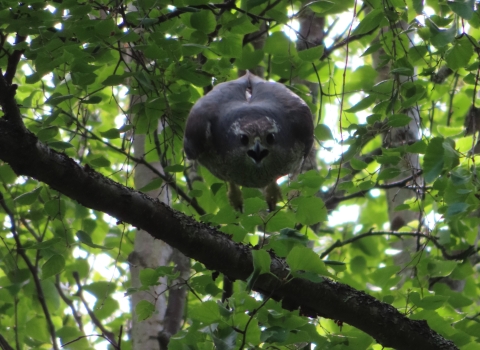Asheville, North Carolina’s Montford Avenue lends its name to and runs through the heart of one of the city’s signature historic neighborhoods. At its northern end, Montford Avenue ends at the entrance to the Klondye Housing Community, a 182-unit public residential development, one of ten managed by the Asheville Housing Authority. At the center of Klondyke Community is a roundabout, circled by city buses making their pass through the community, and providing access to the housing authority offices and nearby apartments. Until this spring, the center of that roundabout was covered in grass. Now the center of Klondyke Community is a 6,000-square-foot pollinator garden.
The garden slowly emerged over the past four months thanks to planning, organization, cooperation, and mainly sweat on the part of many people from many facets of the community:
• Asheville Field Office staff, Asheville Greenworks staff and volunteers, and student volunteers from Temple University came out in March to remove the existing turf, kicking off installation at the garden site. This was followed by the installation of layer of cardboard followed by a layer of coarse mulch. Staff from the Asheville Housing Authority collected the old turf in rolls to be used on other sites.
• Over multiple planting days, Klondyke residents, Asheville Greenworks staff and volunteers, and Service staff put more than 500 plants in the ground. Most of the plants came from a local pollinator plant bank created and managed as a joint endeavor between the Service and Asheville Greenworks, with significant support from Carolina Native Nursey.
• Service staff recently joined Asheville Greenworks staff and volunteers to put down a layer of fine mulch –material that will serve as a layer for future seed germination and the final step in garden installation.
One of the drivers behind the installation, and a regular presence for all stages of installation, was Asheville Field Office biologist Bryan Tompkins. Tompkins has served as the field office’s point person on pollinator issues since pollinators like the rusty-patched bumble bee and monarch butterfly have come to receive or be considered for Endangered Species Act protection in recent years.
Much like the pollinator garden installed at the Asheville Field Office itself, it’s expected the Klondyke garden will serve as a plant source for future gardens as managers of public spaces, from school administrators to parks and recreation department staff, become increasingly interested in installing these gardens which provide a conservation benefit while often decreasing maintenance costs.













